Convos with Creatives - Episode 2 - Lorelei Buescher
Convos with Creatives is an interview series where we talk with Cincinnati-based advertising and marketing professionals about creativity, clients, and whatever else pops into our heads. We're always curious to see what makes people tick, so we've started interviewing Cincinnati-based creative professionals to find out what they have to say about the current state of creativity and video.
If you’re curious about advertising, marketing, or the video production world, I hope you get something valuable out of these conversations.
Our second interview subject is Lorelei Buescher, a Creative Director at Curiosity. A transcription of the interview can be found below. Enjoy!
What’s the most difficult part of managing a creative team?
I think the most difficult part of managing a creative team is that sometimes people come with a really great idea, and they’re really excited about it, and you’re really excited about it, and the whole team loves it...and it’s just not on strategy for the client.
Having to be the person that kills those really great ideas because it’s just not the right time or place for them is really hard.
How do you keep clients happy while maintaining the creative vision of your team?
So I think if everybody’s on the same page in terms of delivering the best solution to the problem the client is really trying to solve, then you can bring a really creative solution to the table that they weren’t expecting, and they can be on board with that. And then the team is happy because they’re doing the work they want to do, and the client’s happy because they’re getting their problem solved, and everyone’s happy.
What’s the best way to get a client to agree to a creative or unorthodox project?
I think the best way to get a client to buy into...sort of a riskier direction is to make the points from the strategy really clear. So if you can draw a really straight line to “this is what you asked us to do, this is who you asked us to reach, and this is why this execution is the right way to go,” I think more often than not they can buy into that.
You know, some clients are just really risk averse and they’re not going to do it no matter what, but if you can make a really strong case for why it’s the right solution to their problem, I think people are willing to jump. If you go and you’re just like, “This is so much fun, and we really love it,” and you don’t address the business problem, then it’s a lot harder to sell.
Where do you see the future of marketing going?
Where I hope the future of marketing is going is that it’s more about the right ideas in the right places for the right audiences. So I think for a really long time it’s been like, jump on the latest thing, you know, like, “Well, we have to be on Snapchat, we have to be on Instagram,” and if that’s not the right channel for your message and for the people you’re trying to reach, you don’t have to be on Snapchat. That’s fine. Or maybe you do, if it’s the right channel for your message.
How has video changed now that it’s 2016?
I think now that it’s 2016 and people have sort of...stopped watching TV, or especially have stopped watching live TV as opposed to streaming, you can not engage with any commercial if you don’t want to or don’t choose to. People really have to choose to engage with it more.
So I think you have to create more compelling content to whoever you’re trying to reach. But then again I think it’s a lot more targeted, so there are pros and cons. If it’s actually playing, you might be reaching the right person a lot more clearly.
Favorite project you’ve worked on?
My favorite commercial that I’ve worked on recently was for the launch of Dairy Pure Milk, and we made this commercial with four live cows in a classroom. We ended up shooting each cow separately, but the director at first wanted to see “okay, can I get all four cows in the shot and just do it for real, all at once?” And that...did not go great.
It’s super weird to have your vision come to life like that, you know, like we’re just sitting in a room saying, “Well, you know, what if we had these cows?” And then all of a sudden you’re on a soundstage with like, a crew of 50 people and four cows.
I think the people were more nervous than the cows.
